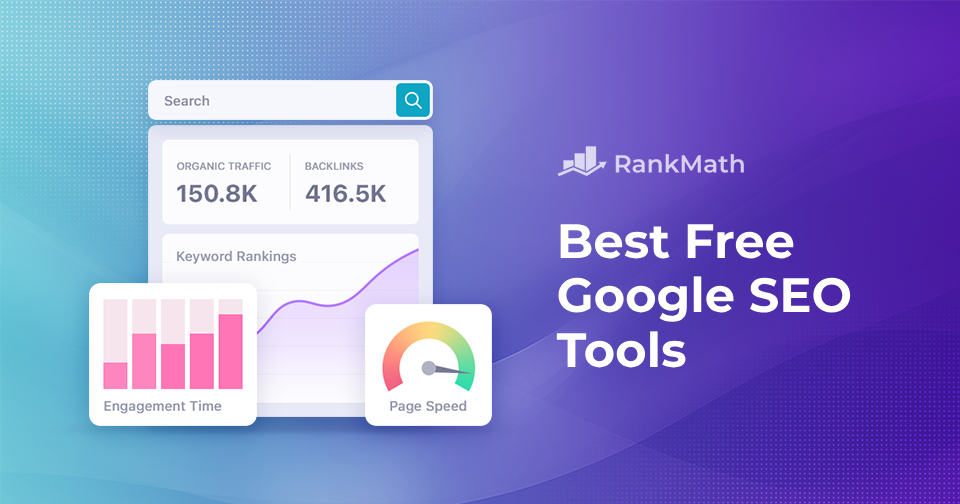
Many people (myself included) got into SEO through the technology and marketing tactics side of things. As our careers progress, we start to find ourselves dealing with leadership in our own company and / or at our clients. As we get even more experienced, we start to seek out that level of influence and engagement.
So how do you build up that sway with the C-suite?
I’ve broken down my thoughts into 7 sections:
- Forecasting, scenarios and business cases
- Connecting our work to the metrics the business cares about
- Building your own skill set – especially presenting
- Thinking bigger
- Using the language of the company’s primary goals
- Set pieces are how things get done
- Making it stick
1. Forecasting, scenarios and business cases
Forecasting has had a bad rap in SEO for as long as I’ve been in the industry. I think this has a few root causes:
- It can feel like a guarantee and that’s something that Google has often warned against, saying things like “No one can guarantee a #1 ranking on Google”
- It can feel like “busy work” that is a distraction from the actual SEO work needed to make good things happen
- Too often forecasts are asked for in bad faith – many people have had bad experiences with bad bosses and bad clients when it comes to forecasting
Getting past the discomfort, and learning to make forecasts, build scenarios, and hence create business cases is a crucial skill. Forecasts provide a basis for discussion, scenarios enable the comparison of options and plans, and business cases are the building blocks for decisions at this level.
It is worth putting in the work to be able to make all three:
- A forecast is a best estimate of what is actually going to happen in the future taking into account known decisions and likely plans – it will sometimes be accompanied by attempts at confidence intervals
- Scenarios are groups of forecasts under different conditions and decisions – they answer “what if” questions – sometimes based on our actions e.g. “what if we invest in content in this way?” and sometimes based on external changes e.g. “what if the advertising market cools by x%?”
- A business case typically combines some form of a forecast (of the status quo), a scenario of the outcome of the decision or request, and a connection between its cost and benefit
I wrote about this in more detail in my article ‘the marketer’s guide to ******.’
2. Connecting our work to metrics the business cares about
Creating a strong business case implies a need to connect our work to the business’ chosen metrics, but that imperative doesn’t stop at the point of decision. Even (especially!) once a project is underway, it is important to ensure that our regular thinking involves tying our work, lead metrics and ultimate outcomes to true value. In most businesses and for most SEO activities, this ultimately means revenue.
It can be tempting to talk mainly in terms of the campaign success metrics that we use internally and measure with our teams – whether these are pure SEO metrics like crawling, ranking, or even links, or whether they edge into the website performance sphere with metrics like traffic, visibility and share of voice.
It may be implicit or even obvious how those website performance metrics turn into business benefit, but it is worth making that connection explicit. Document and sense-check your assumptions, but seek to discuss and report on e.g. incremental traffic gains in revenue if you can.
This is why full funnel testing which connects SEO testing to conversions and revenue is so important. I’ve spoken in the past about winning CRO tests that are negative for organic search (and vice versa!). We increasingly need to consider SEO outside the vacuum of rankings and search results. See my presentation here.
3. Building our own skill sets – especially in presenting
While improving your written materials can get you a long way and drive a lot of improvement, a lot of what you are driving towards with these efforts is getting in the room. Once you’re there, you are going to need to make your case, answer objections and conflict, and ultimately win over the decision-makers. These are skills that you can practice and develop, and a lot of the confidence you need comes from becoming better at presenting.
(Shameless plug): My brother, Tom Critchlow, has written some great free articles regarding executive presence for SEOs as part of his SEO MBA course.
A lot of presenting skills are transferable, so it is worth grabbing any opportunities you can to get practice – whether that is at meet-ups or conferences, in team meetings, or in internal training sessions. And in preparing for bigger leadership presentations, it is definitely worth getting in some deliberate practice in front of people you trust and being diligent in working their feedback into your preparation.
4. Thinking bigger
I find it really valuable to read the public financial statements of companies that I’m working with – and if you are in an in-house role, you’ll definitely want to dive deep into your employer’s business performance (and will probably have access to more internal presentations that go even deeper than the public financials – especially in privately-held companies).
One of the biggest things this will teach you to do is to think bigger. When you are reading financial statements denominated at least in millions, you get a sense of perspective. You start to realise just what kind of programs and initiatives should cross the desks of senior decision makers. Even in smaller private companies it may not come naturally to think about finances at the right scale . We are all naturally inclined to make numbers concrete by thinking about them in terms of our personal finances, but you can learn to think about it in a slightly more abstract way – much like the way a good ***** player will think about their chips and their stack as a tool. What you ultimately end up realising is that it commonly doesn’t matter how many zeroes there are in the number in the spreadsheet, the decision-making tools are fundamentally the same.
When you’ve been surrounded by personal finances and small business or freelance clients, it can be easy to think that no one spends more than a few thousand dollars a month on anything. It’s worth remembering the scale of many companies. SEO agency budgets can be in the 7 figure annual range ($1m+), analytics alone can be 6 figures, and there are tools the business needs that are more expensive than analytics! Many companies have large in-house SEO teams and it doesn’t take many team members before the fully-loaded cost of the in-house team alone is well into the 7 figure range too.
If you can deliver the value, you needn’t be scared to pitch big initiatives, if you can tie them to milestones, have sensible on-ramps etc.
5. Using the language of the company’s primary goals
As you spend time getting to grips with the financials and scale of the company you are focusing on, you will also gain an opportunity to absorb the strategy and language that the CEO uses. You’ll begin to understand the top level goals and the turns of phrase that you know are being used in 1:1s with the rest of the C-suite and in senior management meetings. You can combine the “think bigger” tip with “connecting our work to metrics the business cares about” if you can describe how your initiatives will move the needle on those primary goals.
Through paying attention to public information, I was recently able to connect a specific SEO initiative not only to departmental goals but to top-level company goals for the whole business. Modelling how this particular SEO testing initiative could deliver a meaningful proportion of the company’s primary top-level objective is a great way to unlock the attention (and cheque books!) of senior executives.
6. Realising that set pieces are how things get done
It can be tempting to see the huge amount of energy expended in the run up to major meetings like board meetings as wasteful. The meetings themselves are often (not always!) relatively predictable by the time they actually happen, with a lot of the controversy and conflict having been ironed out and debated in prep and pre-reads. Despite this, the deadline, and the external accountability is a powerful forcing function for making decisions and discovering what’s true.
I was struck recently by an account of this in the political space, where former British Prime Minister spokesman Alastair Campbell talked about how Prime Minister’s Questions (PMQs) were not just an opportunity for the opposition to hold the current PM to account, but were a tool for the PM. The PM would use them to discover what was true in the many departments that reported to him (“I don’t want their line to take, I want facts,”) and even more crucially to drive decisions (“Issues, rows and controversies which might have drifted for a few days often got solved as he ate through the facts, wrote out the argument and made the decision as to what he should announce.”).
Top executives do the same. Decisions that might have dragged on get made just so there can be a slide in the board pack about the decision.
Understand the cadences senior executives are working towards, and help them look good in the process, and you will be much more likely to get what you want!
If you can see reporting not just as a status update, but also as how you embed the connection between your work and the big decisions, you will be setting yourself up for success.
7. Making it stick
It is more common, in the SEO industry, to hear references to made to stick [PDF] in the context of great creative content pieces, but there is a place for storytelling in the workplace as well, and this is never more true than when we are trying to influence the whole org.
The made to stick model is that the most memorable and influential ways of conveying information are via Simple Unexpected Concrete Credible Emotional Stories.
You might not immediately associate the need for emotion and unexpectedness in particular with the theoretically rational and numbers-driven environment of corporate decision making, but those decisions are still made by humans, and we are all wired for great stories. To pick just one element of this list as an example, one way to introduce emotion into internal comms is by reference to competitors: “Executives hate losing to competitors”. There’s nothing more emotional than that!
–
If you can do all of this, if you can build scenarios that relate directly to the things the business truly cares about, if you build your skills and confidence to pitch it boldly, and you have thought big enough and used the language of the company’s primary goals, if you can get the timing right with respect to key set piece decision “moments” and if you can tell a story that sticks, you will have justifiably earned your right to bring SEO into the boardroom.



